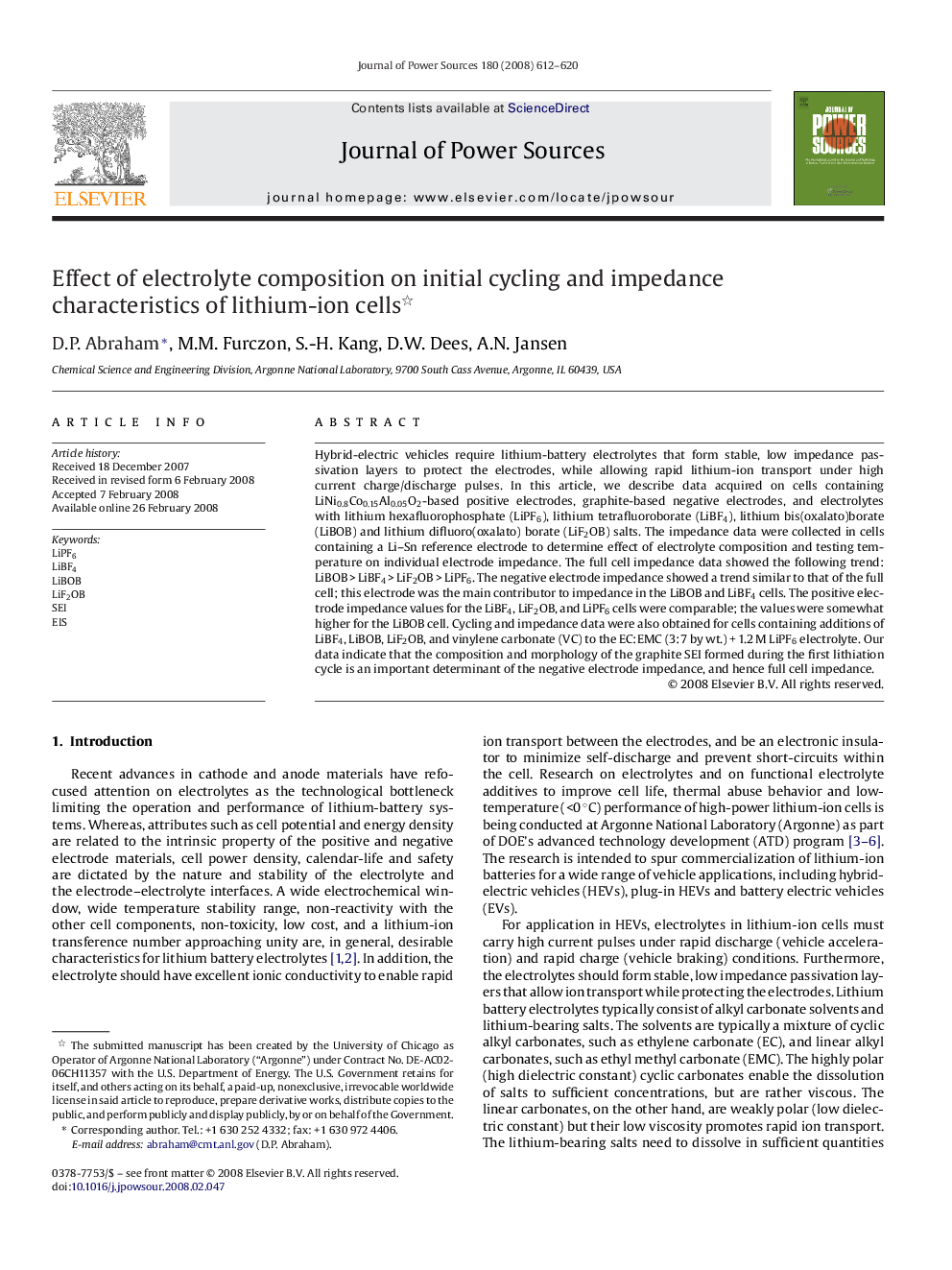| Article ID | Journal | Published Year | Pages | File Type |
|---|---|---|---|---|
| 1290615 | Journal of Power Sources | 2008 | 9 Pages |
Hybrid-electric vehicles require lithium-battery electrolytes that form stable, low impedance passivation layers to protect the electrodes, while allowing rapid lithium-ion transport under high current charge/discharge pulses. In this article, we describe data acquired on cells containing LiNi0.8Co0.15Al0.05O2-based positive electrodes, graphite-based negative electrodes, and electrolytes with lithium hexafluorophosphate (LiPF6), lithium tetrafluoroborate (LiBF4), lithium bis(oxalato)borate (LiBOB) and lithium difluoro(oxalato) borate (LiF2OB) salts. The impedance data were collected in cells containing a Li–Sn reference electrode to determine effect of electrolyte composition and testing temperature on individual electrode impedance. The full cell impedance data showed the following trend: LiBOB > LiBF4 > LiF2OB > LiPF6. The negative electrode impedance showed a trend similar to that of the full cell; this electrode was the main contributor to impedance in the LiBOB and LiBF4 cells. The positive electrode impedance values for the LiBF4, LiF2OB, and LiPF6 cells were comparable; the values were somewhat higher for the LiBOB cell. Cycling and impedance data were also obtained for cells containing additions of LiBF4, LiBOB, LiF2OB, and vinylene carbonate (VC) to the EC:EMC (3:7 by wt.) + 1.2 M LiPF6 electrolyte. Our data indicate that the composition and morphology of the graphite SEI formed during the first lithiation cycle is an important determinant of the negative electrode impedance, and hence full cell impedance.
